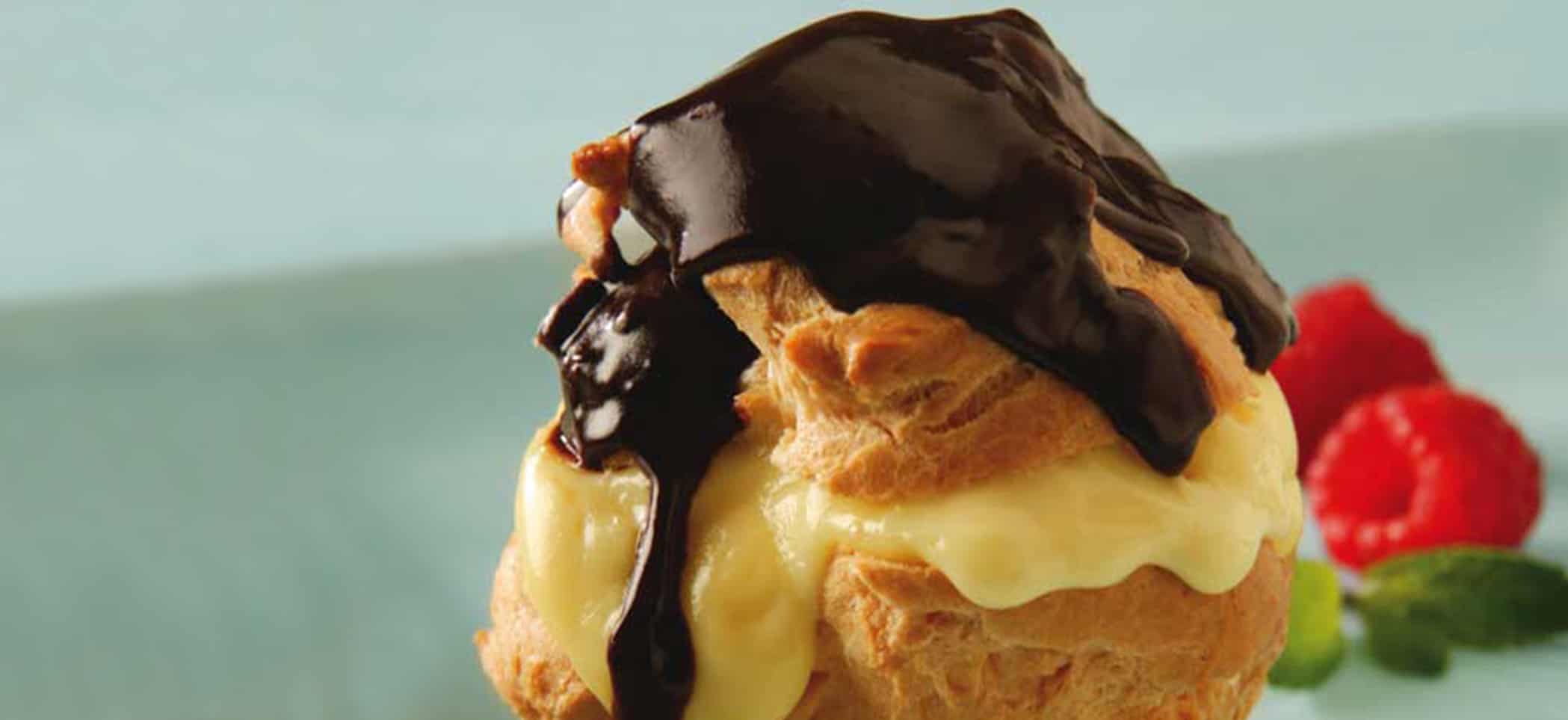Leavening is basically the production or incorporation of gases in a baked product to increase volume and to produce shape and texture. Without the air or steam baked goods essentially would all be flat.1
Eggs can contribute to this process of leavening in two ways. First, when fresh, refrigerated or frozen eggs are present in a formulation or recipe they contribute liquid, which then converts to steam as the product is heated, with this steam a primary factor in leavening.2
Secondly, egg white when whipped aerates a product or helps create the air cells that are eventually filled by steam. As the liquids within the baked good turn to steam or form gases with heat, the steam pushes out the walls of the air cells and expands them. In addition, as egg proteins coagulate they form a network with gluten. The network formed between the combination of proteins and starches sets the walls of the air cells to hold the product shape once it cools. Eggs, according to multiple sources, have a great ability to leaven or puff up foods when air is beaten into them,2, 3 and that they aid in leavening overall in baking applications.4
Part of this is due to the fact that egg whites are capable of expanding or creating a foam that is six to eight times their initial volume. When air is incorporated into the protein molecules in egg whites, the proteins unwind and stretch to form an elastic web that encases the air bubbles.5
Adding an acid, such as cream of tartar, vinegar or lemon juice, can help to strengthen and stabilize the egg white foam. Room temperature egg whites create the best foam volume and stability.5
Whole eggs and yolks can also trap and hold air that expands during heating, leavening cake batters and other baked goods.6 Popovers, eclairs and cream puffs for example, do not use chemical leaveners but rely on steam, coagulation and starch gelatinization for structure to create their characteristic shapes. It is the leavening action supplied by the liquid ingredients such as eggs that creates the airy form due to a large cavity in the center. Baking helps the proteins coagulate and properly set the structure.3
References
- Mushet C (2008) The Art and Soul of Baking, Sur La Table Inc., Andrews McMeel Publishing, LLC, Kansas City, Missouri, USA
- The Role of Eggs in Cooking and Baking Eggs 101, Food Science, Canada
- Brown A, Understanding Food: Principles and Preparation, Third Edition, Cengage Learning
- Gisslen W. (2012). Professional Baking, Sixth Edition, Wiley Global Education, Hoboken, New Jersey, USA
- American Egg Board. “Aeration in Baked Goods.” YouTube, narrated by Shelly McKee, Ph.D., Associate Professor, Department of Poultry Science, Auburn University, Auburn, AL; Feb. 29, 2012
- Stadelmen WJ and Cotterill OJ. (1995). Egg Science and Technology, Fourth Edition, Haworth Press, Inc., New York, USA

